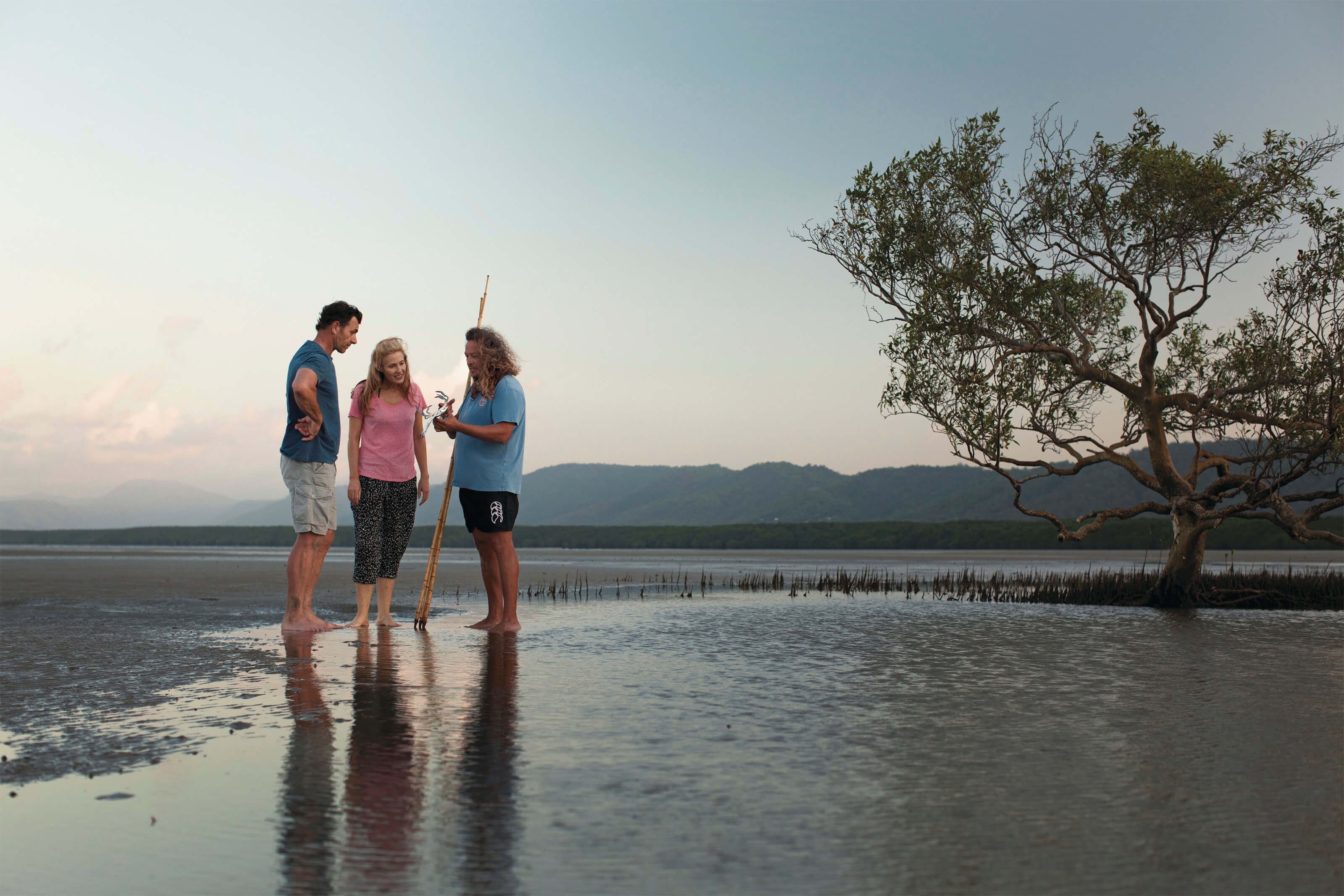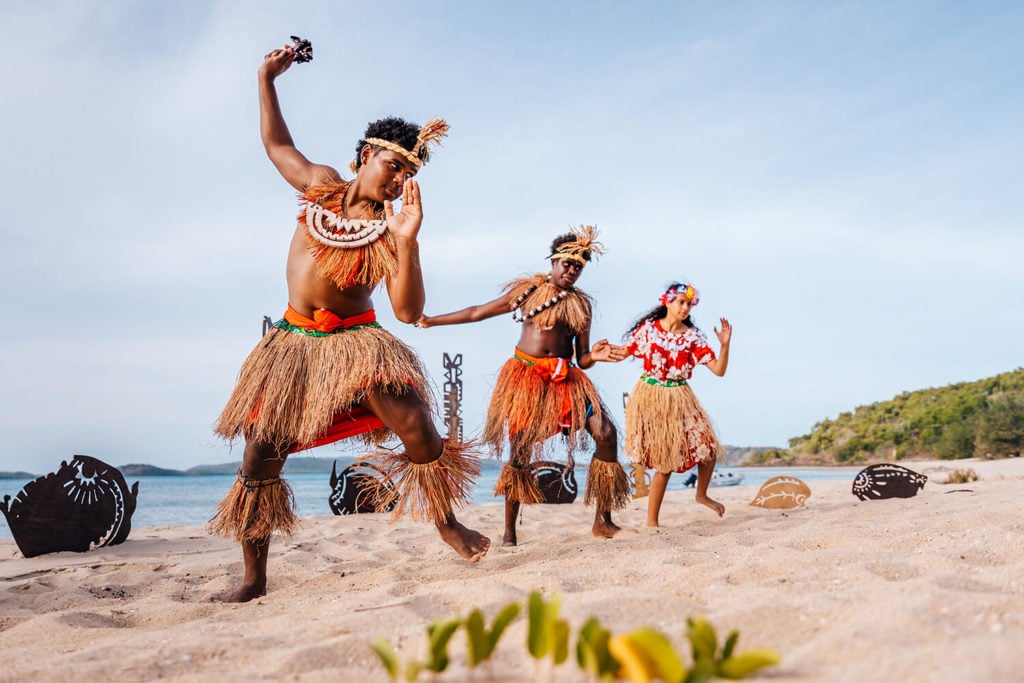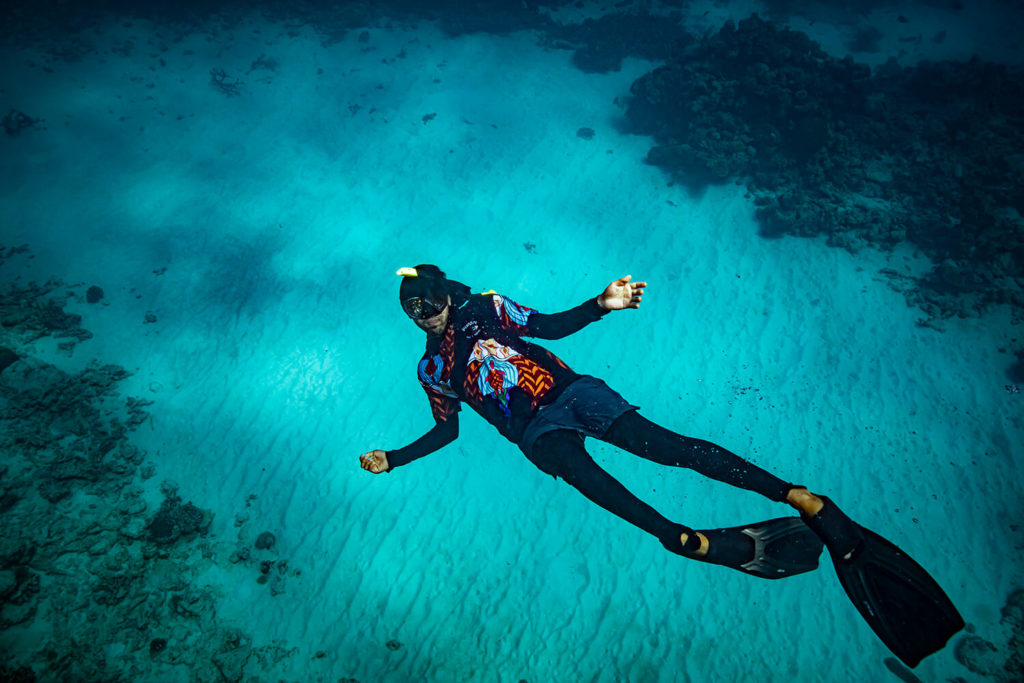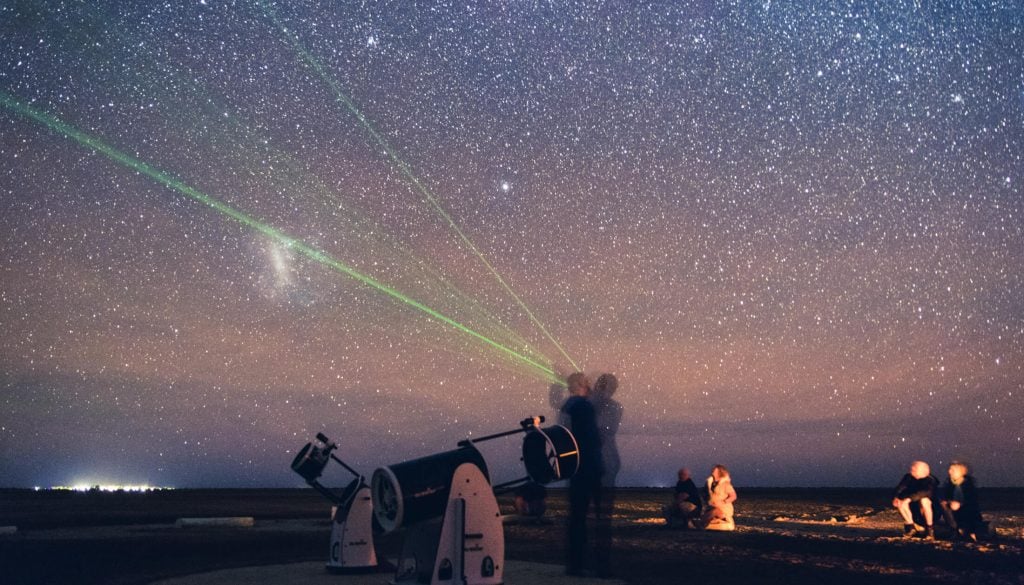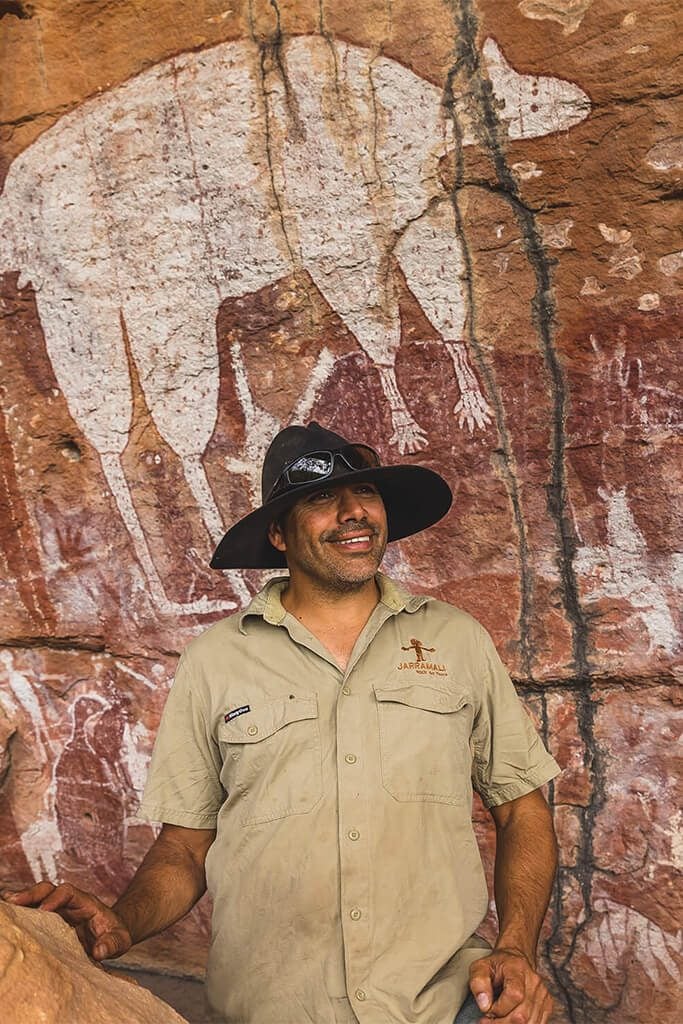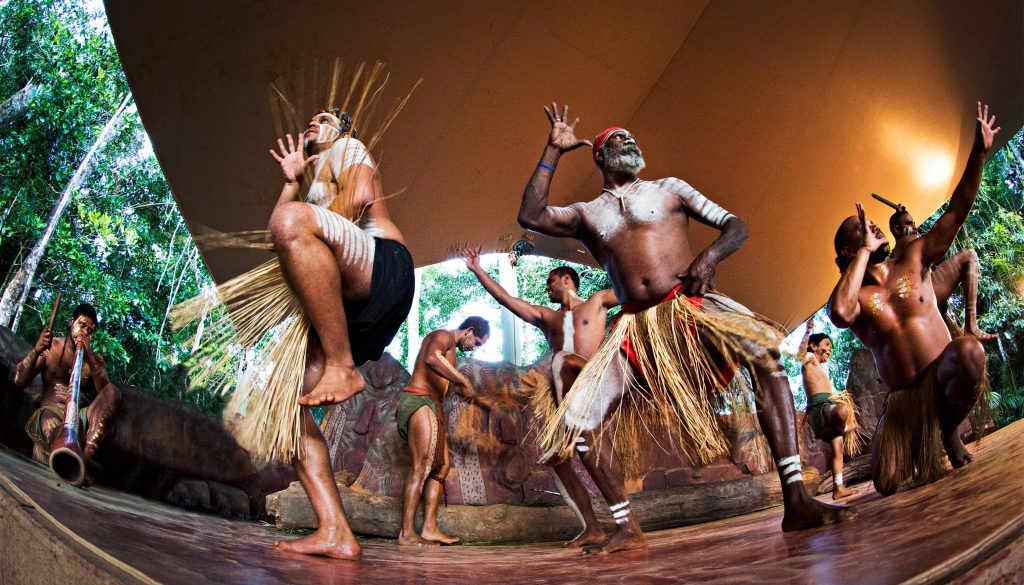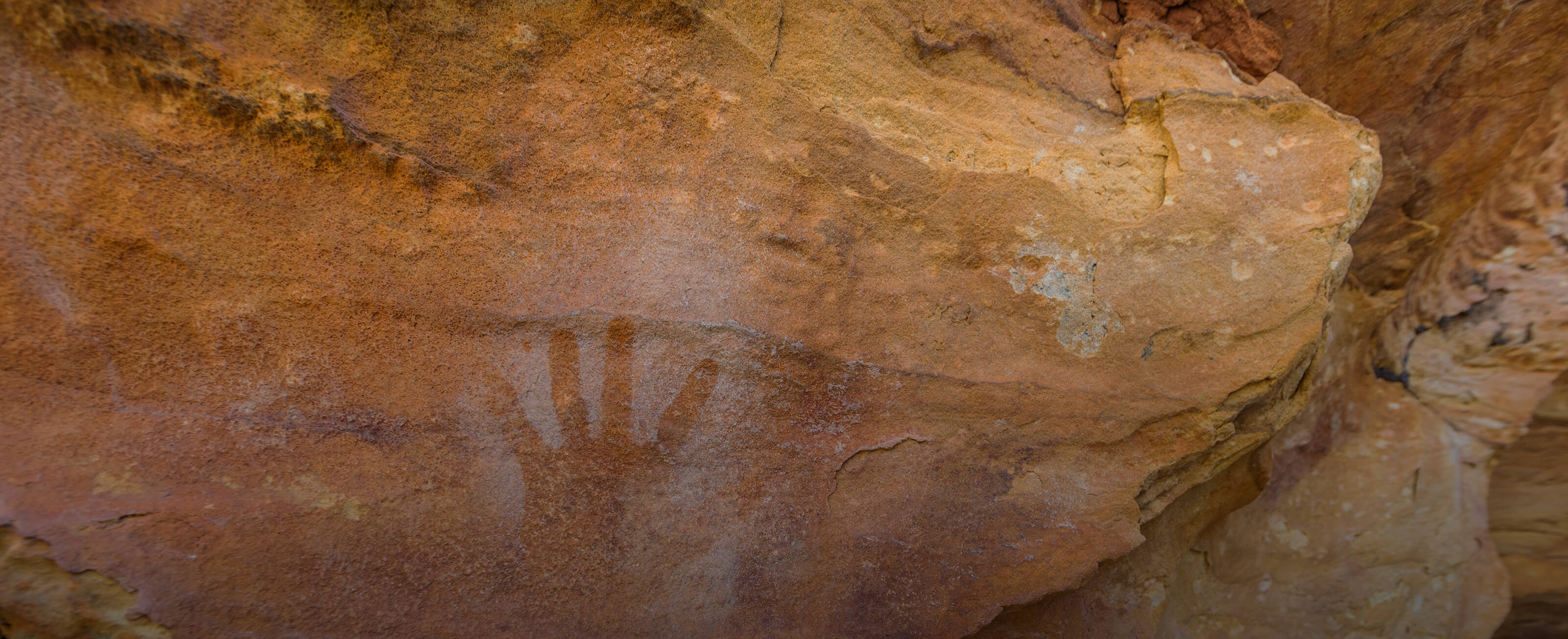TNQ Writer
Under the tutelage of Kuku Yalanji guides, a barefoot and nervous city dweller discovers her hunter’s instincts. Here’s what to expect on a Kuku Yalanji Cultural Habitat Tour.
This article was produced in partnership with News Corp Australia.
It’s an ebb tide. Low clouds are scattered across a grey sky and shroud the mountains that rise from the sea to shape the coastline. My fingers are curled around a bamboo spear and I’m about to find out if I’ve got what it takes to be a hunter. Wet sand squelches through my bare toes and the salty air braces me for the task ahead. On Cooya Beach, just 10 minutes’ drive north of the restaurants and boutiques of Port Douglas, I gaze across an expanse of rippled sand and shallow puddles left by the receding Coral Sea.
A few minutes earlier, I had been standing in the shade of a sprawling Calophyllum tree on the beachfront, laughing as Aboriginal guide Linc Walker reveals a “lazy man’s fishing” secret – the toxic nuts of the tree can be used to kill fish without the need for stalking and catching them. Linc and his brother Brandon have been teaching visitors about their country for more than 20 years through their Kuku Yalanji Cultural Habitat Tours, sharing their hunting skills and the customs and traditions of their people.
Cooya Beach (Kuyu Kuyu in the Guugu Yalandji language), is the place of their childhood, the place where their own children have grown up, and where their children and other family members will sometimes tag along on a tour – especially in the school holidays. It’s more than just a family business, the tours blend seamlessly into their daily life, everyday rituals that would happen even without visitors.
These Kubirri Warra men have a deep connection to the land and the sea, forged over generations. This is the land of the Kuku Yalanji people, extending from the coastal area known as Pretty Beach, near Port Douglas, along about 400km of coastline to the Annan River near Cooktown in the north, through the rainforest regions of Tropical North Queensland, and west to the Palmer River.
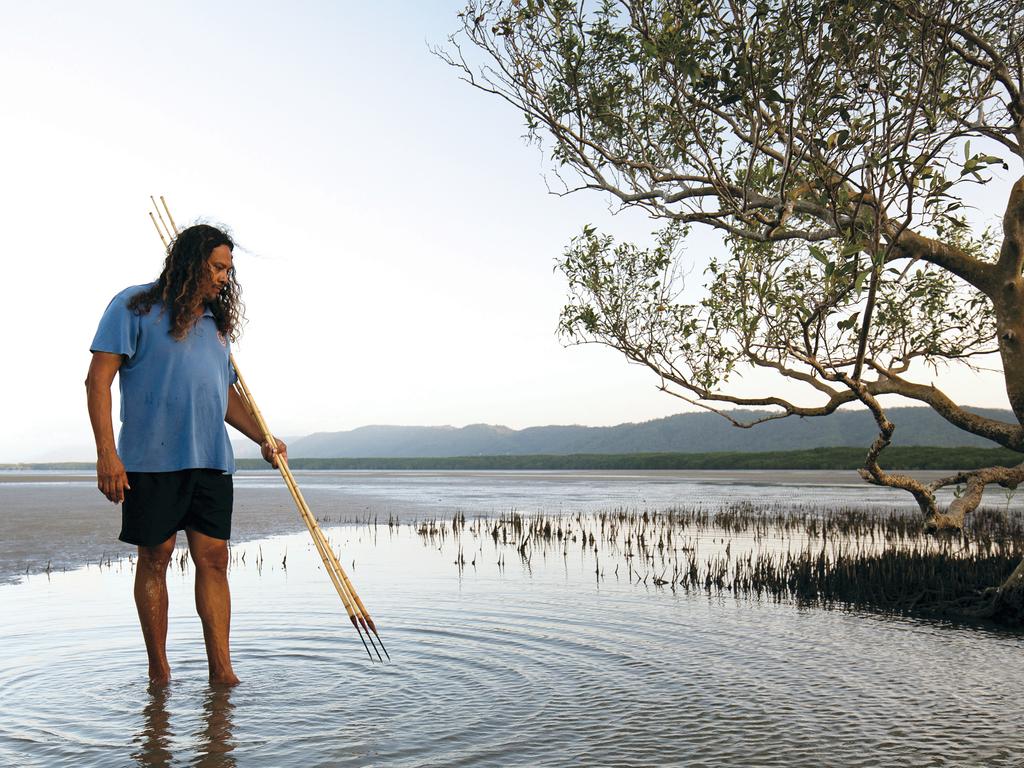
Learn traditional hunting techniques with Kuku Yalanji Cultural Habitat Tours
Cooya Beach is a traditional fishing ground, with three diverse ecosystems – the beach, mangroves and coastal reef – connected by mudflats and tidal lagoons. On this day, we’re going to be initiated into the skills needed to survive on what the land and the sea can provide. The first step is a brief lesson in throwing the steel-tipped bamboo spears we are given – our practice target, a coconut. The results, predictably, are mixed and there is much laughter as we realise our inadequacies.
All ages are relishing this chance to play hunter-gatherer, and I’m making a mental note to bring my grandson Ollie along next time I pass this way. With social distancing and Covid-19 rules in mind, tours are currently run privately for families and groups travelling together, and I’d love to see Ollie’s chubby toes squishing through the sand and mud. What little boy wouldn’t love this outdoor adventure? After all, it’s two hours of fun in which you are likely to get wet and dirty, and he loves to do both!
As we walk towards the receding ocean, Linc gives us hints about how to spot and stalk the crabs and stingrays that may be taking refuge beneath the sand.
Look for something below the surface of the sand, a change in the pattern, something that looks like it shouldn’t be there
Linc tells us the waters here are home to a population of about 10 dugongs (the calves stay with their mother for about 17 years “just like us”) and there are five species of turtle, the most common being the green turtle, as well as plenty of whiting and barramundi. In summer, you’re also likely to see black-tipped reef sharks and the tour changes a little as jellyfish inhabit the warmer tropical waters.
“Crocodiles and sharks will be more active in summer, and we only hunt on the outgoing tide to avoid the jellyfish,” says Linc. “These are the traditional protocols that have kept us alive.”
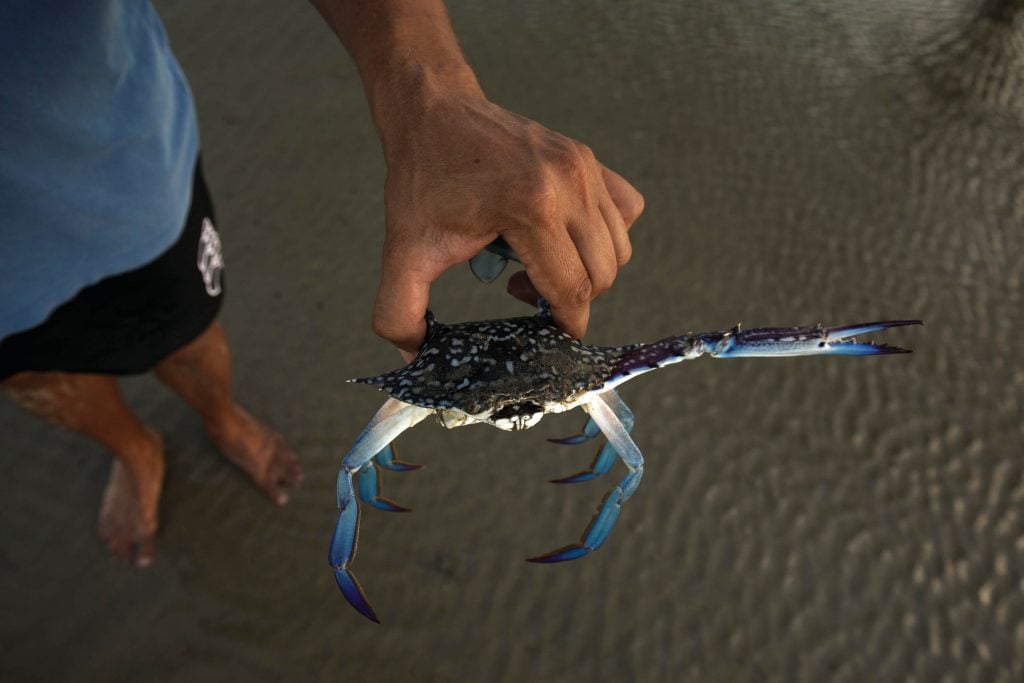
Blue swimmer crab caught at Cooya Beach
We spread out, scattering across the wide expanse of beach, slowing our pace, watchful. I concentrate on that nebulous notion of what to look for: tiny changes, odd shapes or colours, patterns broken, fractured lines in the sand. Then I see it: the natural flow of the sand seems to give way to something different. I’m not sure what I’m aiming at, but let the spear fly anyway. It lodges harmlessly in the sand, but I’ve disturbed a crab. Now it’s more visible and my second throw unerringly finds its mark.
My quarry firmly impaled on the shining steel tip of my spear, I run towards Linc’s bucket. No one is more surprised than me at my hunter’s instinct, or my elation. I forget about trying to stay dry (note to self: next time, wear shorts) and before I realise it, I’m up to my knees in the water, relishing the unfamiliar feel of a spear in my hand, and looking for more prey.
A couple of others have had success too, and when just enough has been taken to make a small meal, we stop. One of the lessons here is that coastal resources must be used wisely; never take more than you need. A foray into the mangrove forest, clambering over and around huge twisted tree roots, through oozy black mud, yields more for the bucket in the form of shellfish.
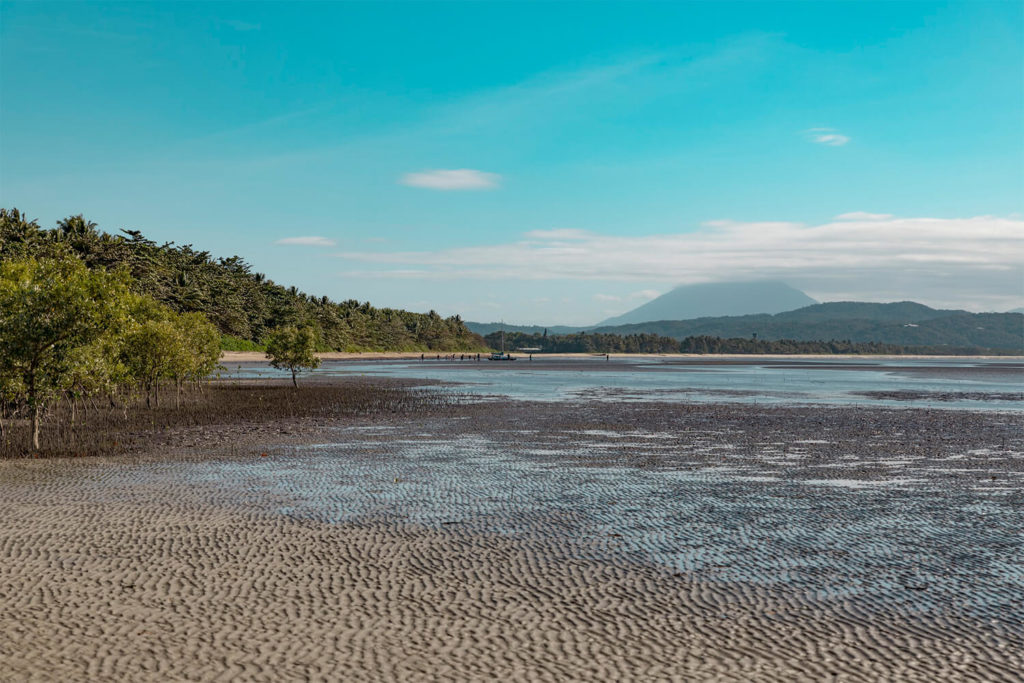
Cooya Beach at low tide
Back on the beach, the catch is cooked: steamed periwinkles and clams, spicy chilli crab and barramundi. It’s delicious. Linc also teaches us about other bush tucker. The beach almond tree is “a vegetarian back-up plan” for those who aren’t successful with the spear. Bush hibiscus encourages saliva flow to avoid dehydration.
“Every day is different,” he says.
The tides move everything, but there is always food. It’s all about keeping healthy and connected to country
For the brave, there are also night fishing tours – either walking or by boat – but “it’s a bit more scary at night”.
At two, Ollie’s a bit small to be carrying a spear but I’m willing to wait a few years to give him an experience he’ll never forget, an important chance to see a traditional way of life that still exists for the First Nations people of his country, and one they are eager to share with others.
Barefoot in the hunting grounds of the Kuku Yalanji people, I have learned much about their traditions, and about myself.

